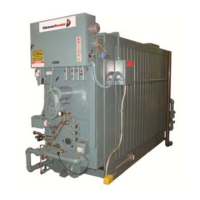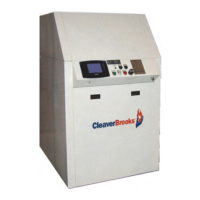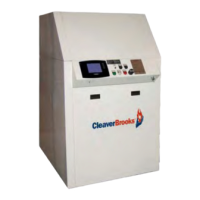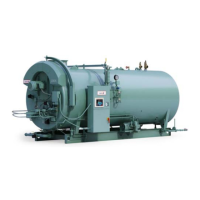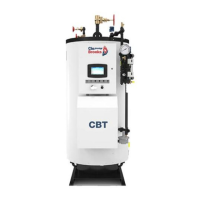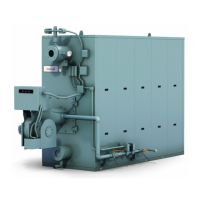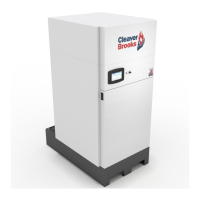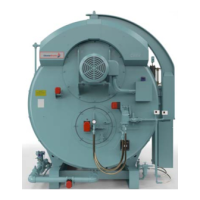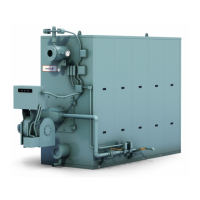Adjustment Procedures
6-20
750-211 (revised 2009)
Promethean Boilers, Model 4WI Manual
To reach the high-fire rate, turn the manual flame control switch toward “Open” in minor increments while moni-
toring combustion for overly rich or lean conditions.
At high-fire, the gas butterfly valve should be wide open as indicated by the slot on the end of the shaft. Set and
lock the high-fire stopscrew so that it is just touching the valve arm.
Determine the actual gas flow from a meter reading. With the butterfly valve open and with regulated gas pressure
set at the calculated pressure, the actual flow rate should be close to the required input. If corrections are necessary,
increase or decrease the gas pressure by adjusting the gas pressure regulator, following the manufacturer’s direc-
tions for regulator adjustment.
When proper gas flow is obtained, take a flue gas reading. The O
2
should be between 3% and 4% at high-fire.
If the fuel input is correct, but the O
2
values do not fall within this range, the air damper travel may need to be
adjusted. Adjustment of the air damper linkage is described in Section 6.2.
With the high-fire air/fuel ratio established, the gas pressure regulator needs no further adjusting.
After being certain that the air control damper and its linkage are correctly adjusted to provide the proper amount
of secondary air, and after adjusting the gas pressure regulator, final adjustment can be made, if necessary, to the
gas modulating cam to obtain a constant air/fuel ratio throughout the entire firing range.
Since the input of combustion air is ordinarily fixed at any given point in the modulating cycle, the flue gas reading
is determined by varying the input of gas fuel at that setting. The adjustment is made to the metering cam by means
of adjusting screws, which are turned outward (counterclockwise from the hex-socket end) to increase the flow of
fuel, and inward (clockwise from the hex-socket end) to decrease it. Flow rate is highest when the cam follower
assembly is closest to the jackshaft.
Using the manual flame control switch, position the cam so that the adjusting screw adjacent to the end or high-fire
screw contacts the cam follower. Perform a combustion analysis at this point. If an adjustment is necessary, turn
the adjustment screw accordingly to increase or decrease fuel flow. Take a combustion reading. Repeat as necessary
until the desired results are obtained. Repeat the process, stopping at each adjusting screw, until the low-fire adjust-
ing screw is reached.
6.17.1 — Burner Low-Fire Adjustment
The fuel input should be adjusted using the low-fire cam screw, to approximately 25% (100-200 HP) or 10% (250-
800 HP) of that at high-fire. At low-fire the O
2
flue gas reading should be between 5-7%.
It may be necessary to readjust the setting of the low-fire stop screw in order to obtain the proper air/fuel ratio at
low-fire. To ensure that the low-fire position of the gas butterfly valve is always the same, allow a half turn of the
stopscrew for overtravel.
If the air damper must be reset to meet the low-fire air/fuel requirements, combustion at higher firing rates must
be rechecked.
NOTE: Do not use any lubricant on the adjusting setscrews. The setscrews have a nylon locking insert intended to
provide locking torque and resistance to loosening and a lubricant could cause damage.
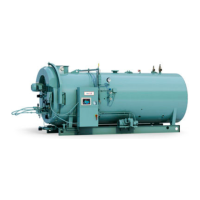
